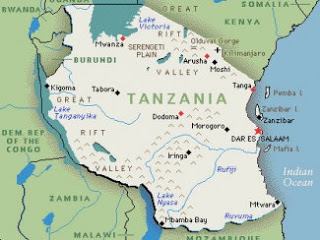Countries seeking to develop newly-discovered petroleum resources are
facing a fall in global oil prices, with competition from the ‘shale
gas revolution’ in the United States, as well as renewable energy
sources.
At a New Petroleum Producers Discussion Group in Tanzania, organised
by Chatham House and co-sponsored by the Commonwealth Secretariat,
authorities from more than 20 countries met this week to find solutions
to these and other shared challenges.
The four-day forum from 30 June to 2 July, at which a set of Guidelines on Good Governance for Emerging Oil and Gas Producers was
released, was attended by government ministries and national oil
companies from Belize, Guyana, Kenya, Mauritius, Mozambique, Jamaica,
Seychelles, Trinidad and Tobago, Tanzania, and Uganda, among other
nations.
“In the midst of the oil crisis there is less capital available for
investment,” commented Michael Mwanda, Chairman of the Tanzania
Petroleum Development Corporation, which hosted the meeting in Dar es
Salaam. “Some projects which were pegged on a high oil price are now
becoming uneconomic and difficult to operate.
“We need to learn from each other and share experiences on how to
reduce costs, operate efficiently and become more competitive,” Mr
Mwanda said.
Addressing the forum, Ekpen Omonbude, Natural Resources Adviser at
the Commonwealth Secretariat, remarked: “This price decline has
necessitated a critical look at strategies to manage petroleum
resources, from development programmes to responsible wealth management,
to ensure benefits for future generations.”
Dr Omonbude stressed that while the slump in the price of oil – from
over US$100 a barrel in 2014 to around US$60 today – presents immediate
challenges, these can be mitigated through the adoption of flexible
fiscal regimes, increased economic diversification, the development of
good governance regimes and revenue transparency.
“Our mission is clear – to help position our member countries to
realise the potential of their resource wealth as a driver of
sustainable development and economic prosperity,” the Commonwealth
representative said.
The
New Petroleum Producers Discussion Group was
established in 2012 to help countries think critically about policy
options available either during the first steps of exploration and
development or when restructuring governance arrangements. Options
include setting up regulatory institutions and drafting regulations and
laws that encourage investment, while balancing the needs of society and
environmental protections.
This week marked the first time the discussion group has met outside
London and included a final-day national seminar for representatives of
Tanzania’s oil and gas sector. Co-sponsors of the initiative include the
Natural Resource Governance Institute and the Africa Governance
Initiative.
Dr Valérie Marcel, Associate Fellow at Chatham House, principal
author of the guidelines, said: “The emergence of shale oil and new
renewable technologies offer opportunities and challenges. How the
emerging producer is affected and will respond is what we have been
debating. One of the main issues is how to adjust to a low price
environment, asking what impact is this going to have on licensing terms
and the ambitions of national oil companies.”
She added: “Emerging producers are thirsty to learn from their peers
about what has worked elsewhere and what advice to give. More
established producers want to know whether they are doing things right
and what pitfalls they should avoid. This is a really important learning
process.”
During the forum, participants exchanged experiences on how to
attract investment while preserving long-term national interests,
managing expenditure plans as well as ways to guard against abuses and
fraud in contracts and licensing. Training sessions focused on involving
local suppliers in supply chains, the design of fiscal systems and new
information tools.
Eddy Belle, Chief Executive of PetroSeychelles, the national oil
company of Seychelles, said: “[Petroleum] is a very dynamic business –
there is new technology coming in and new ways of doing things. What
Chatham House is doing with the help of the Commonwealth Secretariat is
getting people together so you have the chance to learn from the
mistakes as well as the successes of others.”
Bashir Hangi, Communications Officer for Uganda’s Petroleum
Exploration and Production Department, commented: “Such a forum helps us
a lot as emerging producers. We peer review ourselves, and our people
go home with a lot of advice. One piece of advice I would share is that
you cannot ignore your stakeholders – civil society, academia and
communities where there are operations. They should not be taken for
granted; they should be brought on board and be involved in the
management of the resource.”
Anthony Paul, Managing Director of the Association of Caribbean
Energy Specialists, said: “Oil and gas resources give opportunities to
deepen industrialisaton, providing power and access to better lighting,
heating and cooking facilities as well as petrochemicals and
fertilisers. There are also benefits from developing the services
industry. What strikes me most is that all countries want the same
thing: they want the resource to benefit their citizens.”








